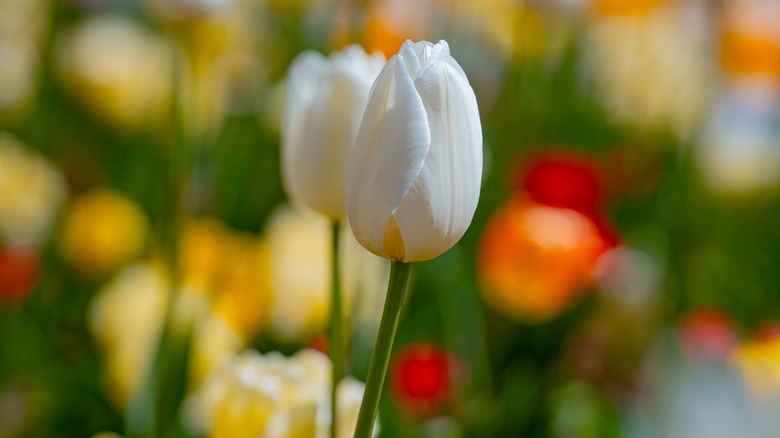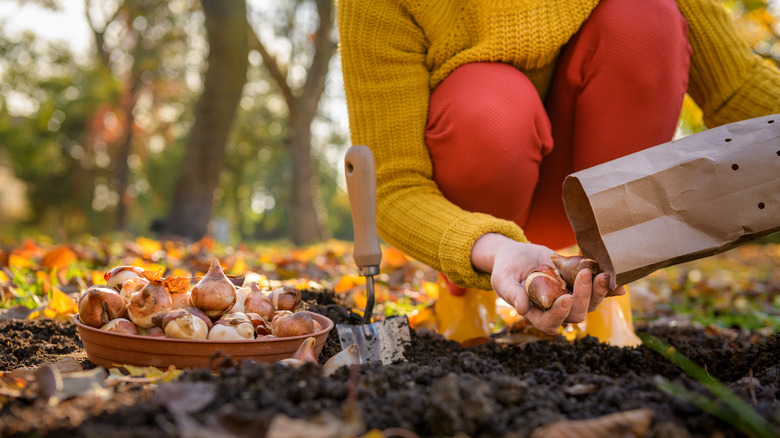Use This Type Of Soil When You're Planting Bulbs
When winter snowfall recedes and April showers give way to May flowers, it's an exciting time for gardeners to see their colorful landscaping plans come to fruition. However, some of the most popular flowers require long-term investment. Lilies, tulips, hyacinths, daffodils, and anemones are among the many varieties of "bulbs," which are typically perennials with underground food storage systems that support years' worth of spring blooms in a variety of shapes and colors; flowers that can grow just as well in beds as in open meadows. You should plant hardy spring-blooming bulbs in the fall, from late September through November or before the first hard frost, so that their root systems can develop before the ground freezes. And when you do, use a lighter type of commercial potting soil or sandy loam.
One important tip for this category of flora is having good soil drainage, as they need to get water while buried upwards of three times the depth of the bulb's largest diameter – but you don't want them to rot in overly soggy soil. Dirt with a high clay content will be detrimental, and shoot to have a pH level between 6 and 7 with high phosphorus concentration to stimulate the development of roots. Bulbs also grow best in sandy loam that has five to six hours of direct sunlight on a daily basis, ideally mulched after the first winter frost to protect young flowers from temperature fluctuations. If your local area doesn't fit these growing conditions, as there are many different types of clay soil out there, worry not; there are ways to amend your soil for bulb planting.
How to make your soil perfect for spring-flowering bulbs
First things first, assess where the main problems lie with your potting soil or loam: drainage, pH levels, phosphorus concentration, or any combination of the above. Each of these concerns has a different solution. If you have clay-heavy soil with poor drainage, you can try planting your bulbs on a slope or in a raised bed and mix organic material like compost or peat moss into the top 12, or ideally 18 inches of soil. Use limestone to raise the pH level of your soil; alternatively, use sulfur or aluminum sulfate to lower pH. Finally, when adding phosphorus to your soil, you can use bone meal — 3 or 4 pounds per every 100 square feet — or fertilizers with superphosphate to amend the lower level of the planting bed. Be sure not to fertilize your spring bulbs after they flower, as this could lead to bulb rot.
If you're still having trouble keeping your bulbs alive beyond their first season despite using the appropriate type of light soil or sandy loam, the issue might be your choice of flora. Bulbs like dahlias and caladiums are considered tender and may not survive the winter. Tender bulbs should be removed from their outdoor soil and brought inside during colder seasons, and they often can be replanted the following year. Inside or out, be sure you're using the right soil if you want a strong harvest come springtime — and just be careful if you're a pet owner, as spring bulbs like tulips are poisonous for dogs.

